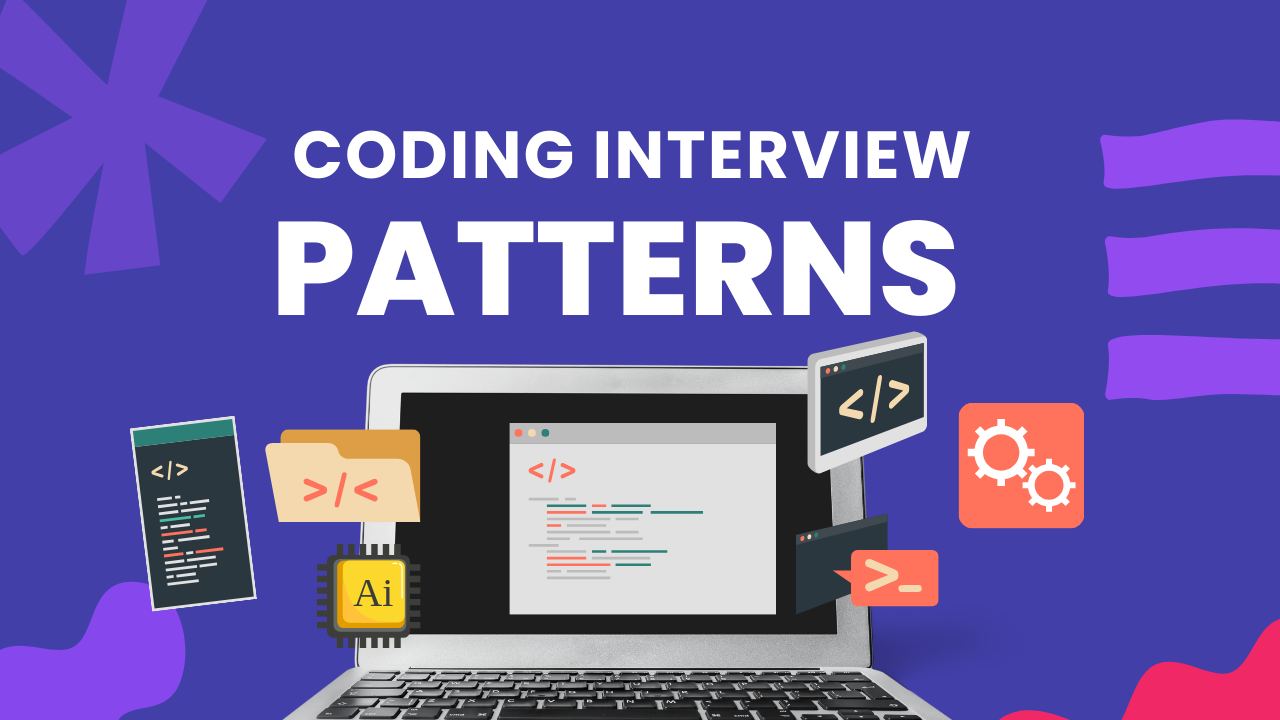
You Only Need 25 Questions to Master Every Coding Interview Pattern!
Let’s face it — preparing for coding interviews can feel overwhelming. With hundreds of problems out there, it’s easy to get lost in a sea of Leetcode links. But here’s the truth:
You don’t need to solve 300+ questions. You only need to master the right 25.
Yes, you heard that right.
By strategically tackling just 25 hand-picked problems, you’ll touch on every major coding pattern asked in interviews at companies like Google, Microsoft, Amazon, and startups alike.
🧮 Arrays – The Foundation of Everything
Arrays are the most common data structure interviewers love. You’ll see problems involving two pointers, sliding windows, sorting, and prefix products.
- 3Sum (Problem 15) – Classic problem to master 2-pointer technique.
- Combination Sum (Problem 39) – Recursion and backtracking at its best.
- Merge Intervals (Problem 56) – Critical for interval-based logic.
- Insert Interval (Problem 57) – Smart insert + merge logic.
- Product of Array Except Self (Problem 238) – Teaches you to think in prefix and suffix patterns.
🔤 Strings – Tame the Text
String manipulation teaches you to manage pointers, hashmaps, and optimize time complexity.
- Longest Substring Without Repeating Characters (Problem 3) – Learn the sliding window technique.
- Minimum Window Substring (Problem 76) – Optimize with character frequency tracking.
🥞 Stacks – Think in Reverse
Stack problems train your brain to simulate history, handle previous/next greater elements, and more.
- Trapping Rain Water (Problem 42) – Combine stack and two-pointer intuition.
- Evaluate Reverse Polish Notation (Problem 150) – Classic stack usage.
- Min Stack (Problem 155) – Design data structures with optimal access.
⚖️ Heaps – Prioritize Efficiently
Min-Heap or Max-Heap is ideal when you need priority-based sorting.
- Find Median from Data Stream (Problem 295) – Balancing heaps is the key.
- K Closest Points to Origin (Problem 973) – Distance-based sorting using heaps.
🔎 Binary Search – Divide & Conquer
Binary search isn’t just for sorted arrays — it appears in rotated arrays, custom conditions, and even maps.
- Search in Rotated Sorted Array (Problem 33) – Binary search on twisty arrays.
- Time Based Key-Value Store (Problem 981) – Combine hashmap + binary search.
🌳 Binary Trees – Think Recursively
Binary trees are the heart of recursion and depth-first search.
- Binary Tree Level Order Traversal (Problem 102) – BFS in trees.
- Lowest Common Ancestor (Problem 236) – Important for path tracing.
- Serialize and Deserialize Binary Tree (Problem 297) – A real system design interview favorite.
🧠 Dynamic Programming – Optimize Smartly
DP problems teach you to cache repeated subproblems and optimize brute force logic.
- Maximum Subarray (Problem 53) – The intro to Kadane’s Algorithm.
- Coin Change (Problem 322) – Top-down and bottom-up DP essentials.
🌐 Graphs – Explore the World
Graphs are used in real-world systems like social networks, maps, and more. Think in terms of DFS, BFS, topological sort, etc.
- Clone Graph (Problem 133) – BFS/DFS cloning of connected nodes.
- Number of Islands (Problem 200) – BFS/DFS in 2D grids.
- Course Schedule (Problem 207) – Topological sorting concept.
- 01 Matrix (Problem 542) – Level-order BFS in a grid.
- Rotting Oranges (Problem 994) – BFS from multiple sources.
🔁 Recursion – The Thinking Pattern
Recursion helps solve problems by breaking them into smaller versions of themselves.
- Permutations (Problem 46) – All permutations using backtracking.
If you can deeply understand and solve these 25 questions, you’re not just memorizing — you’re mastering the patterns. These patterns repeat in hundreds of questions with just small variations.
Whether you’re applying for product-based companies, startups, or service-based roles, these are your must-knows.
🔥 Bookmark this.
🔁 Practice each problem.
✅ Get interview-ready.
DSA Roadmap & Interview Questions
Join our WhatsApp channel for more latest updates!
Lets Code
Contributing Writer